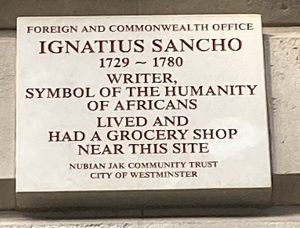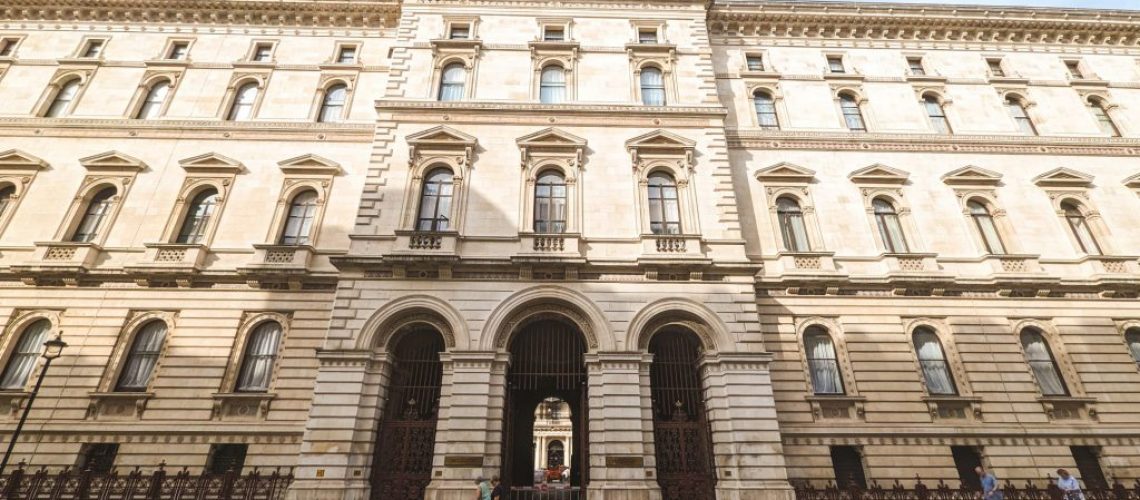Abolitionist, writer and composer.
Born on a slave ship, Ignatius was originally enslaved by the Spanish. At the age of 2 he was given by his owner to 3 sisters living in Greenwich after being orphaned. He then became a butler to the Duke of Montagu who assisted Ignatius with his education. Ignatius made good use of the library at the house in Greenwich. Ignatius was given the name Charles upon baptism.
When the duke’s wife, the duchess died (the duke having died before her) she left him some money with which he bought a greengrocer’s shop in King Charles St. Ironically the shop sold items like sugar, rum and tobacco produced by enslaved persons, it was impossible to avoid selling them; if he hadn’t sold them the shop would have not survived. There is a plaque commemorating Ignatius Sancho on the Foreign, Commonwealth and Development Office near the now demolished shop, one of his influential customers was the Whig politician Charles Fox.

As a property owner he was entitled to vote, almost certainly the first Black person to do so. He exercised his right to vote from 1774 – 1780. (At the time only around 2 percent of men had the vote.
He became involved in the abolitionist movement to end the transatlantic slave trade in the British Empire, one of several Black people whose important contributions were forgotten and not recognised until the late 20th century.
Known as a man of refinement and culture and had a portrait painted by the leading artist Thomas Gainsborough. This is probably the first portrait of a Black person in the country.
He was a talented composer having written a book called ‘The Theory of Music’ and a man of letters, many which were published in 1782 in 2 volumes after his death. They contained moving accounts of the horrors of enslavement, believed to have been read by the Prime Minister Lord North. Ignatius Sancho and these letters became a symbol of humanity in the fight against the slave trade. He also highlighted his experiences as a Black man in Georgian London in which he encountered racist attitudes.
He died in 1780 and was first Black person to have an obituary in a newspaper, in this case ‘The Times’. A church going Christian, He was buried in an overspill of St. Margaret’s church burial ground in Christchurch Gardens, unfortunately, there is no inscription left.
There are plaques on the Foreign, Commonwealth and Development Office and the site of the house of the Duke of Montagu where Ignatius worked in Greenwich. The greengrocer’s shop which Ignatius ran is referenced on the plaque there as being near in the nearby area.
Philip Scott (City of Westminster guide)
@walkwithphilip

